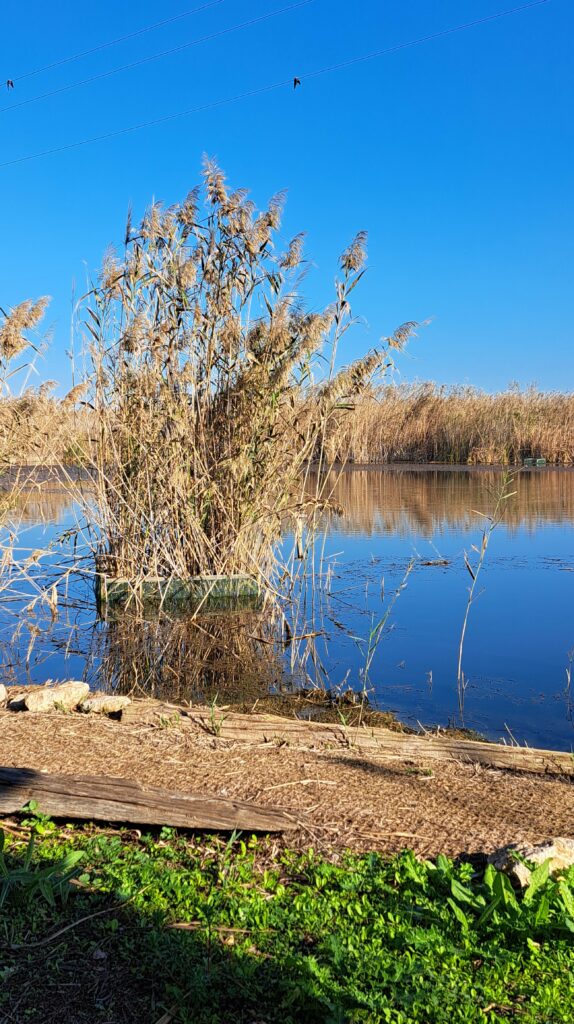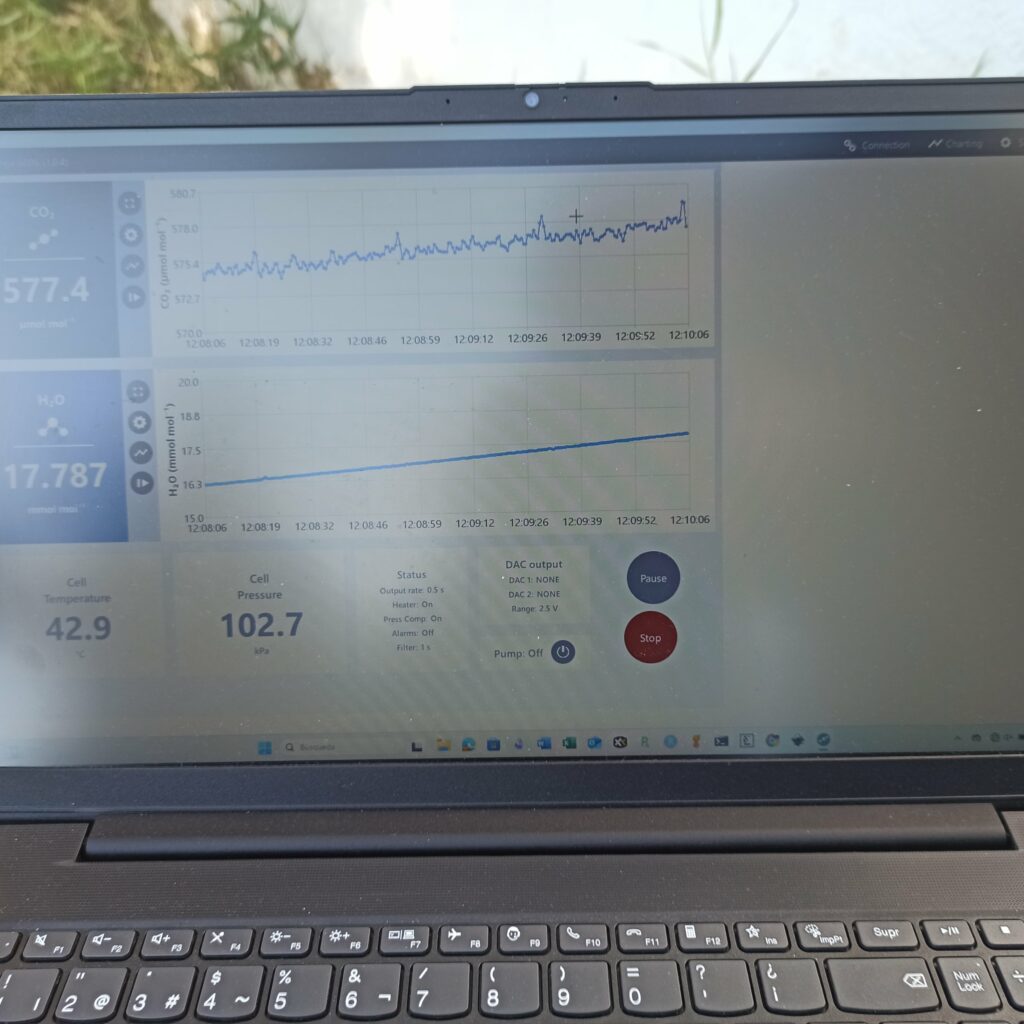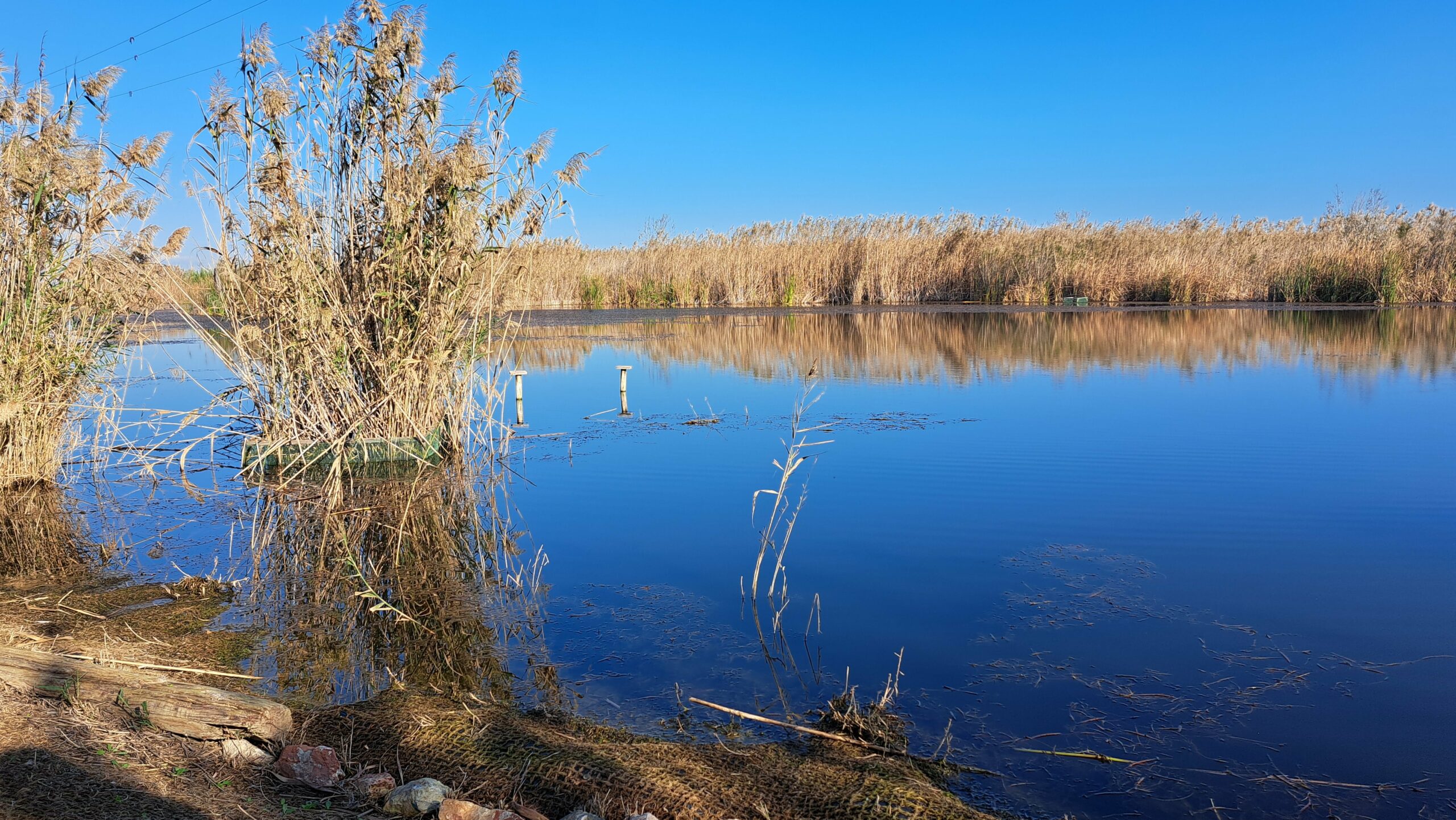Wetlands play a critical role in carbon sequestration, making them essential for climate change mitigation. Despite covering only about 1% of the Earth’s surface, wetlands store approximately 20% of the planet’s organic ecosystem carbon, outperforming forests and marine ecosystems in carbon storage efficiency per unit area. This is largely due to their anoxic soil conditions, which slow decomposition and allow organic matter to accumulate over time.
While wetlands are renowned for their ability to sequester carbon, degraded wetlands can exacerbate carbon emissions instead of mitigating them. When wetlands are drained, disturbed, or degraded due to human activities such as agriculture, urbanization, or resource extraction, they release significant amounts of stored carbon into the atmosphere, transforming from carbon sinks into carbon sources.
C-sequestration is one of the main Wetland based Solutions
C-sequestration is one of the main solutions (WP1) addressed by Wetland4Change (learn more about the project in our website), to implement this as nature-based solutions for wetland conservation and restoration, with the goal of enhancing climate adaptation and mitigation across the Mediterranean.
We talked about that with Dr. Carlos Rochera, researcher from UVEG – University of Valencia, lead partner of the carbon sequestration work package. His main responsibilities include coordinating data collection, integrating ecological indicators, and developing management strategies to enhance carbon storage. Last but not least, the University of Valencia is engaging stakeholders and decision-makers to ensure the practical application of findings in wetland conservation and climate adaptation policies
What does Wetland4Change aim to test regarding carbon sequestration?
The Wetland4Change project aims to test how different types of wetlands function as carbon sinks by assessing their capacity to capture and store carbon. Our approach is primarily based on measuring CO₂ and CH₄ fluxes across wetland compartments and analysing how hydrology, vegetation cover, ecological status, and land use influence these processes. By integrating field measurements with remote sensing and modeling, the project first aims to map wetland carbon sequestration capacity and then evaluate management strategies that can enhance it based on this mapping. Based on this, we aim to provide decision-makers with practical tools to enhance wetland management policies, enabling them to integrate a climate perspective into their management plans.
medsea-min-1024x1024.jpg)
Floating chamber used for measuring gas fluxes (like CO₂ and CH₄) in wetlands. Presented by Carlos Rochera Uveg for Wetland4Change Interreg Euro-MED.
Where are we currently in the project and what are the next steps for WP1 in the coming months?
We are currently conducting the assessment of carbon exchange potential in the pilot wetlands, defining methodologies and collecting baseline data, while initial monitoring efforts are already underway. For the carbon flux estimation, we are applying a tiered approach tailored to the capacities of each pilot site. For instance, wetlands with limited data availability are following the simplest approach, using default carbon exchange values to do estimations for the whole wetland. Instead, where environmental variables such as hydrology, vegetation cover, and sediment characteristics can be incorporated, would be possible to refine carbon exchange estimates. Finally, a more complex tier can be implemented in sites with the capacity for high-precision in-situ carbon flux measurements. Regardless of the approach applied in each site, detailed methodological guidelines are being developed to ensure that, where feasible, more advanced assessments can be implemented in the future for pilot sites. Additionally, we are refining wetland classifications to improve sequestration models and integrating remote sensing techniques to map functional wetland compartments, enhancing our understanding of how wetlands contribute to carbon storage and how they can be managed for climate mitigation.
What are the key environmental features considered when assessing carbon sequestration in wetlands? How to measure them?
Several environmental features play a crucial role in wetland emission abatement. Wetland type is a key factor, as different categories—such as coastal, saline, temporary, and permanent wetlands—can influence carbon fluxes in distinct ways. In many cases, these characteristics may overlap within the same system. Hydrological conditions, including water levels and quality status, are fundamental, as they regulate the balance between carbon uptake and emissions. These are monitored through field observations, remote sensing, and hydrological models.
Vegetation structure, encompassing species composition, biomass accumulation, and seasonal growth dynamics, drives also significatively the carbon dynamics in Mediterranean wetlands. These aspects can be assessed through field surveys or remotely using vegetation indices such as NDVI (Normalized Difference Vegetation Index). Also, soil characteristics, such as organic carbon content, sediment composition, and moisture levels, also determine both the amount and type of carbon flux (i.e., CO₂ vs CH₄). These parameters are analysed through sediment sampling and laboratory testing.
Finally, direct gas flux measurements provide essential insights into a wetland’s role in greenhouse gas emission abatement. CO₂ and CH₄ fluxes are quantified using standardized techniques, including closed chamber experiments and eddy covariance systems.

Vegetation structure plays a crucial role in carbon dynamics within Mediterranean wetlands. Picture taken in Albufera Park, Valencia
What are the main indicators used to quantify capacity of wetland to mitigate GHG emissions in WP1?
To evaluate this, Wetland4Change relies on several key indicators. As commented before, the measurement of CO₂ and CH₄ fluxes helps determine whether a compartment of wetland is actively storing or emitting carbon. Given methane’s high global warming potential, its balance relative to CO₂ is particularly important. Soil organic carbon stocks are also a critical indicator, as they reflect long-term carbon storage in wetland sediments. In addition, aboveground and belowground biomass accumulation provides insights into how much atmospheric carbon is captured by plant growth. It is also of interest to assesses the ecological status of wetlands, following the EU Water Framework Directive (WFD), since healthier wetlands with well-functioning ecological processes tend to have higher sequestration capacities.
How do factors like hydrological connectivity and vegetation cover impact carbon storage in Mediterranean wetlands?
Hydrological characteristics and vegetation cover play a fundamental role in determining the carbon storage capacity of Mediterranean wetlands. The hypothesis is that preserving the natural hydroperiod enhances carbon retention and minimizes emissions, as it helps maintain a more balanced carbon cycling within the wetland ecosystem, in such way that sequestration and emission processes remain more equilibrated. Conversely, disruptions in water regime—whether due to artificial drainage, excessive flooding, or dryness—can accelerate carbon loss and, in some cases, increase methane emissions. Since carbon exchange processes vary significantly throughout the hydroperiod, it is essential to monitor them across its full range, capturing extreme situations.
Vegetation cover is equally crucial, as dense emergent plant communities contribute to carbon sequestration by trapping organic material, reducing sediment erosion, and promoting biomass accumulation. Different plant species play varying roles in these processes, with some being more effective at storing carbon than others.
Proper vegetation management can further enhance this mitigation capacity, an aspect also explored within the project and intended for integration into wetland conservation and climate adaptation policies.

Carbon Sequestration measuraments
What are in your opinion the most evident effects of land uses in the catchment of wetlands regarding C sequestration?
Land use in wetland catchments has a profound effect on their ability to function as carbon sinks.
Agricultural expansion and urbanization often introduce excessive nutrient loads into wetlands, leading to eutrophication, increased decomposition rates, and higher greenhouse gas emissions. Similarly, land drainage and reclamation significantly reduce wetland areas, disrupting their natural capacity to store carbon.
In this regard, Wetland4Change aims to highlight the positive impact of conservation and restoration efforts, particularly those addressed to re-establish natural hydrology and promote a proper vegetation management, both of which are expected to maintain sequestration potential. Strategies such as rewetting degraded wetlands, controlling nutrient inflows, and restoring native vegetation can significantly favour the abatement of GHG emissions in these ecosystems.

Land use in wetland catchments has a profound effect on their ability to function as carbon sinks. Valencia, Spain
What are the expected policy recommendations based on WP1 results?
Based on the WP1 findings, the project will propose several policy recommendations. A key focus will be integrating wetland carbon sequestration into climate mitigation strategies, aligning with EU policies such as the Green Deal and nature-based solutions frameworks. This approach aims to position wetlands not only as biodiversity hotspots but also as essential components of carbon offset strategies. Additionally, the project will promote wetland protection and restoration efforts, trying that they are prioritized in environmental policies.
Standardized monitoring methodologies will also be recommended to enhance the consistency and comparability of sequestration assessments among pilot sites and transferable to other sites. Also, we will highlight the importance of hydrological governance, promoting water management strategies that promote the abatement of GHG emissions. Our idea is to synthetize this into cause-and-effect matrices, providing a structured framework to support decision-making and guide climate-friendly wetland management strategies.


